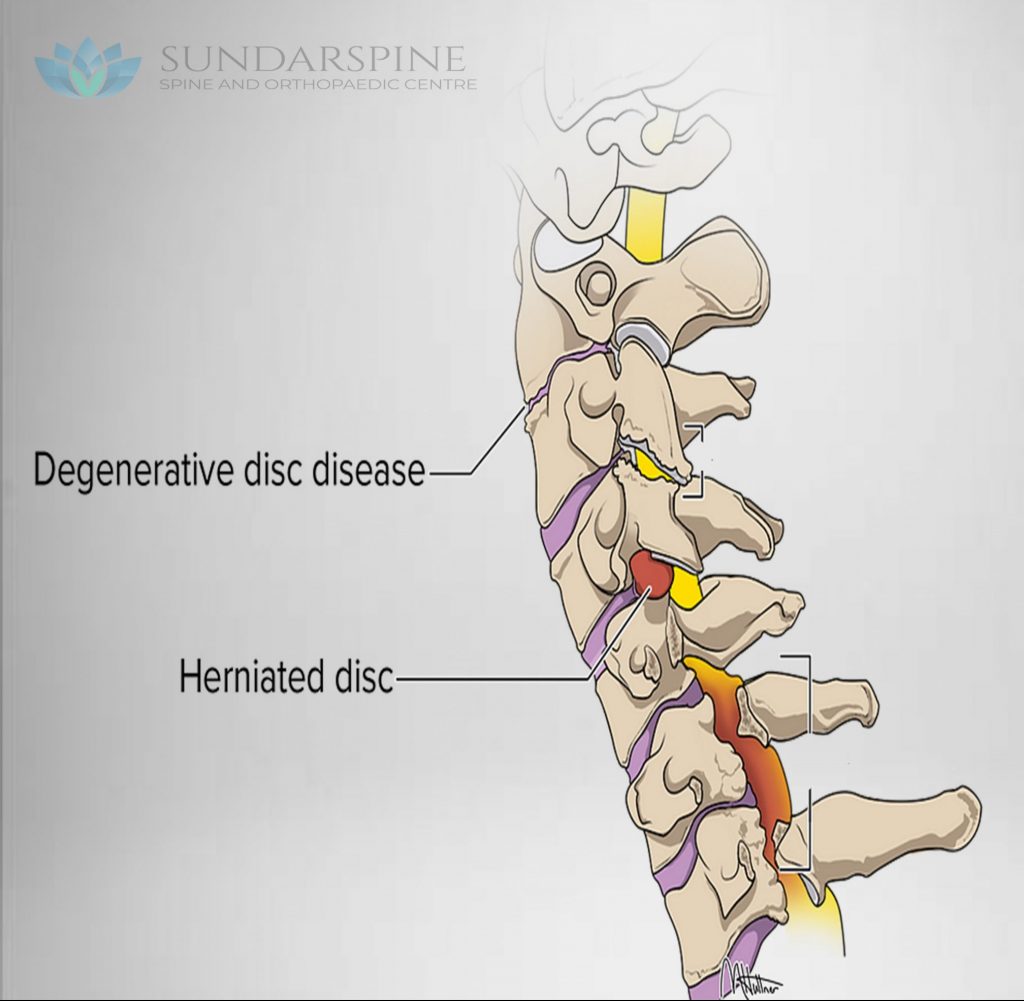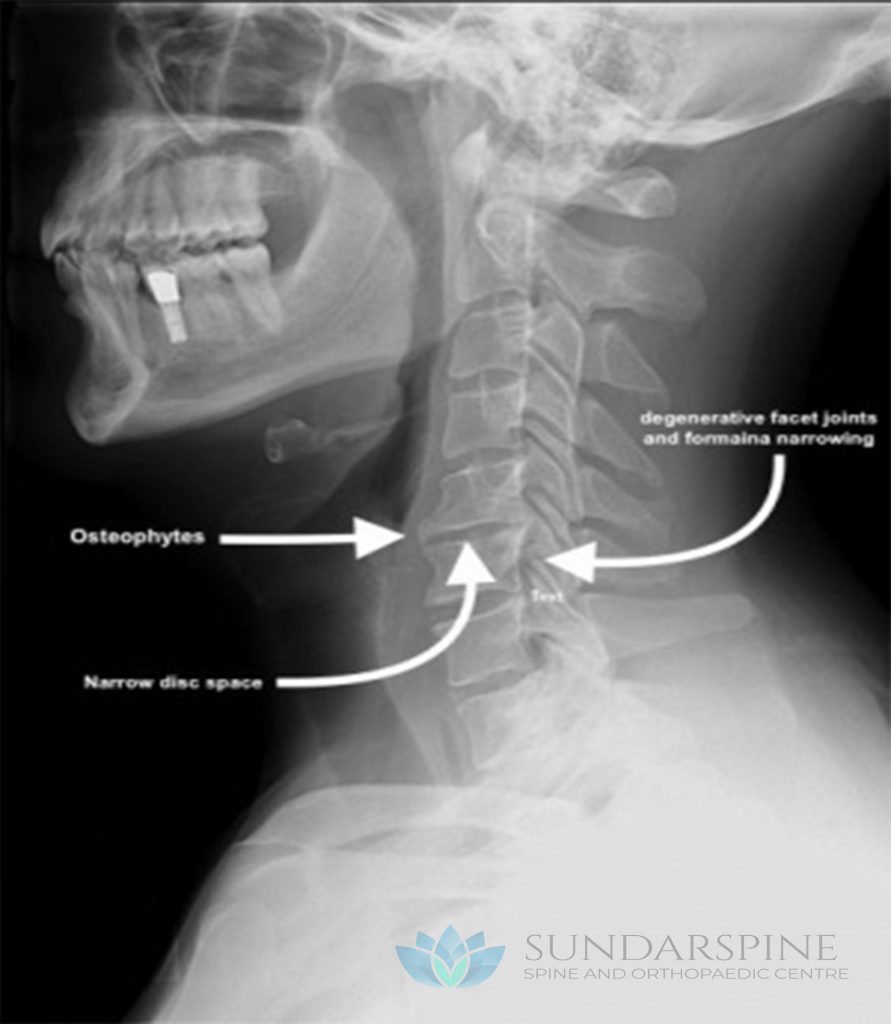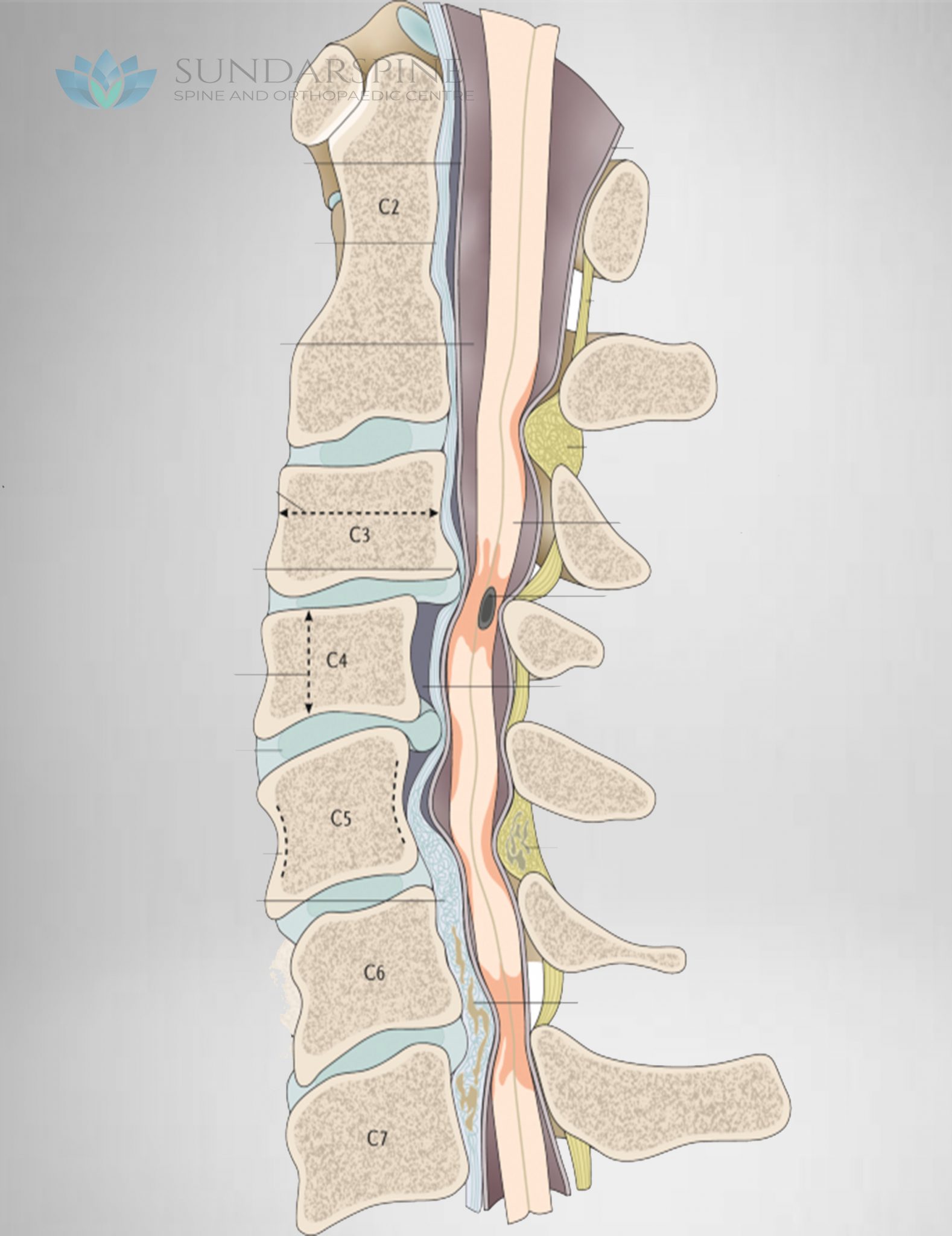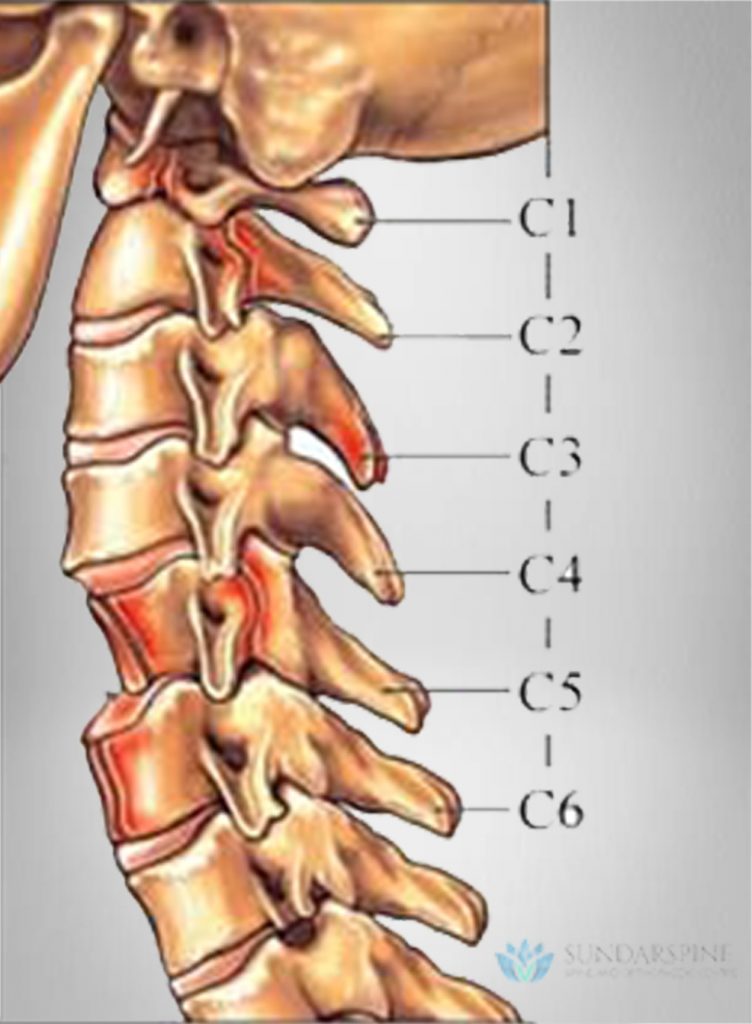- drsundar@sundarspine.com
- Youtube
For Appointments, Call
+(91) 9080 9680 66
+(91) 9080 9680 66

Neck degenerative disc disease is a common cause of neck pain and radiating arm pain. It develops when one or more of the cushioning discs in the neck spine starts to break down due to wear and tear
Symptoms: Neck pain, painful neck movements, Radiating pain to shoulder and arm, Numbness or weakness of the hands
Risk factors: Smoking, Lifting heavy weights, Obesity, Genetic
Causes: Chronic degeneration of the posterior aspect of the disc wall causing breakage and leaking of the disc contents. This causes compression and irritation of the nerve roots and the cord.
When to See a Doctor: Neck pain for more than a week, radiating pain, numbness or weakness of the upper limb or hands, unsteady walking
Treatment: Mainly by medication, rest and exercise. Surgery only for acute or severe conditions

Neck spondylosis is a general term for age-related wear and tear affecting the spinal disks in your neck. As the disks dehydrate and shrink, signs of osteoarthritis develop, including bony projections along the edges of bones (bone spurs). Usually involves multiple levels
Neck spondylosis is very common and worsens with age. More than 85 percent of people older than age 60 are affected by Neck spondylosis.
Most people experience no symptoms from these problems. When symptoms do occur, nonsurgical treatments often are effective.
Symptoms: Neck pain, Pain on extension, decreased neck movements
Treatment: Most often can be managed with medication and exercises. Severe impingement of nerve roots or cord requires surgical intervention

Symptoms:
Risk factors: Old age, rheumatoid arthritis, injury, neglected Neck disc disease
Causes: Significant compression of the cord caused due to any pathology or condition can cause myelopathy. The blood supply to the cord will be affected and result in irreversible damage unless intervened at the earliest
When to See a Doctor: Immediately. Delay usually results in a poor prognosis.
Treatment: Little role for conservative management. Surgery is the mainstream of treatment.

Neck fractures usually result from high-energy trauma, such as automobile crashes or falls. In elderly people, ground-level falls, such as falling off a chair, can result in a Neck fracture.
Symptoms: Significant, localized neck pain and stiffness. Severe injury with cord compression can present with numbness, weakness, or quadriplegia (unable to move both upper and lower limbs)
Treatment: High unstable fracture or dislocation requires surgical intervention. Delay in the presentation may cause a poor prognosis. Minor stable fractures may be managed conservatively with a cervical collar.
